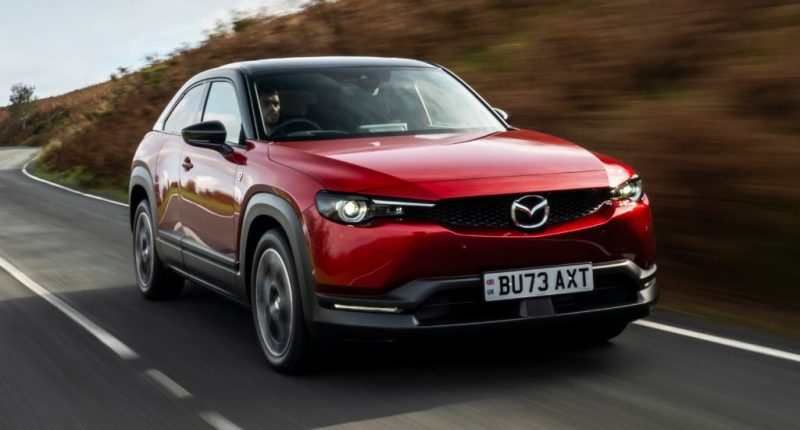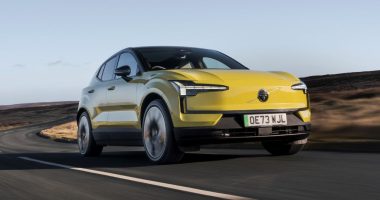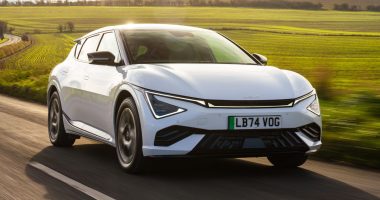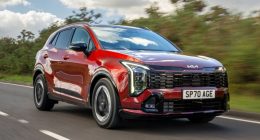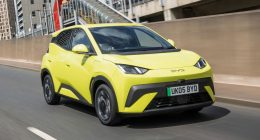In the new car market, most mainstream models have one Unique Selling Point – maybe two or, at a push, three. In the case of the slow-selling MX-30 from Mazda, you could write a whole book (or, coincidentally, road test) on them as there are so many.
But before we delve a little deeper into what makes this left-field choice of a sub-compact SUV stand out, a brief recap is probably called for because, chances are, you are unlikely to have heard of, or indeed seen many of these in supermarket car parks, residential drive ways, or on a road near you.
When first launched in the Spring of 2021, the timing could hardly have been worse for the Japanese manufacturer as the world – and its people – tried to rebound from the effects of the COVID pandemic. It is fair to say the underlying reason why the Peugeot e-2008 and Vauxhall Mokka-e challenger did not take off boiled down to real-world range.
The decision to prioritise an all-electric version first, rather than introducing it alongside the plug-in hybrid – which is being critiqued here – meant that over the last three years, UK dealers have managed to shift less than 3,500 units.
With a measly 124-mile range, and frustratingly slow charge rates, the pure electric MX-30 was only ever going to appeal to a particular group of buyer – and that left the door open for another power source to occupy the space underneath the bonnet.
Badged ‘R-EV’, this latest model is a range-extender that is as complicated as it is clever. A piston-free petrol engine develops 74bhp, yet it never powers the front wheels. Instead, it serves as a mini generator to top up the 17.8kWh battery which then feeds an adjacent, front-mounted electric motor with 168bhp.
So, what does it all mean? A driving range of 400-miles if the 50-litre fuel tank is filled to the brim which makes it far more flexible as a daily driver and one where range anxiety is less of an issue. The battery alone, say Mazda, has a 53-mile range – enough for the average daily commute – and in terms of charging times, a 36kW DC can get the cells from zero to 100% in half-an-hour, 50 minutes if using an 11kW unit, or 90 minutes should a 7.2kW home charger be the only option.
Eagle-eyed readers will have picked up on the fact the rotary engine – the first of its kind to appear in a production car since the RX-8 sports coupe, and commonly known as a Wankel engine – does away with pistons. Rather, the 830cc block relies on converting pressure to spin its rotors and the net effect is a smaller and smoother driving experience.
It has a peculiar yet likeable note during acceleration that verges on a gator utility vehicle; it thrums along but is never too raucous. Combined with the e-motor’s instant low-down shove that is available right from the get-go, the MX-30 R-EV feels zippy in town and adequate in a rural setting. Performance is not, if you will excuse the pun, electric; 0-62mph comes up in a respectable 9.1 seconds but a top speed of less than 90mph leaves a lot to be desired in 21st century motoring.
On the driving front, the MX-30 has a firm quality to it meaning body movement and lean are well contained yet it still manages to hold its own when faced with broken or sunken Tarmac or poorly repaired sections of road. Well-weighted steering ensures it is fun to drive and although the brake pedal demands a firm foot, the trade-off is a precise response for smooth and predictable stops.
The powertrain is one USP and the rear-hinged ‘suicide’ doors is another. You can guarantee the latter will get people talking. In theory, they are a good idea as passengers can pop in and out of the back with minimal effort. In reality, the door catch – which is located where the top of the B-pillar would otherwise be – calls for spatial awareness so as to avoid head-on-plastic contact.
Another faff is the need to open the front door initially to access the rear door handle. This is particularly annoying in tight car park spaces. Once in, head room is adequate whilst leg and knee room are compromised and the raised floor limits space for feet under the two front seats.
The interior, like the suicide doors, is also novel and features, of all things, cork in its construction for the area right below the raised centre console to keep items from rolling about. Technology is naturally strong and includes a digital multimedia system that is shared with other cars in the Mazda portfolio as well as a smattering of USB points to keep mobile devices juiced up.
UK buyers have three model choices, starting off with ‘Prime-Line’ (£34,750), before moving on to ‘Exclusive-Line’ (£36,650) and finally ‘Makoto’ (£39,050). All are offered in nine body colours and are distinguished from the EV MX-30 by badges on the tail-gate and front wings, and unique alloy wheel designs that measure 18-inches across the three-car line-up. Heated mirrors, rain sensing wipers, LED automatic headlights, a reversing camera, and front and rear parking sensors are a small selection of the creature comforts.
